When it comes to selecting the right materials for your water supply system, PVC pipes stand out for their durability, cost-effectiveness, and ease of installation. However, with the myriad of options available on the market, choosing the best PVC pipes for your specific needs can be daunting. This guide aims to demystify the process by providing comprehensive information on the various types of PVC pipes, their applications, and key factors to consider. Whether you’re a homeowner tackling a DIY project or a contractor looking for reliable solutions, this guide will equip you with the knowledge to make informed decisions. From understanding different pipe grades and sizing to exploring the benefits of UV-resistant coatings and pressure ratings, we cover all essential aspects to ensure your water supply system is efficient, durable, and safe.
What Are the Different Types of PVC Pipes?
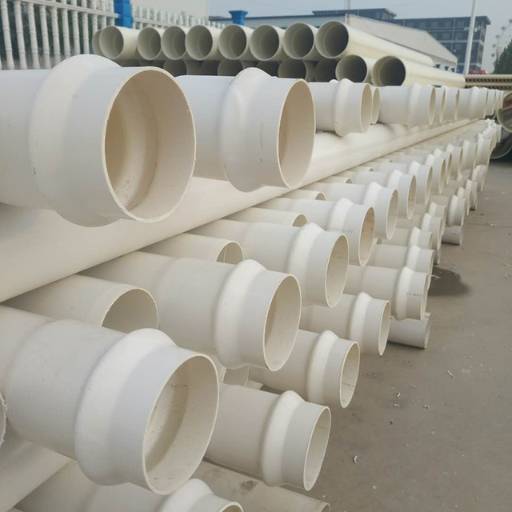
Image source:https://p4psearch.1688.com/
PVC pipes come in various types suitable for different applications. The main types include:
- Schedule 40 PVC Pipes: Known for their smooth interior walls, these are ideal for residential and commercial water distribution systems.
- Schedule 80 PVC Pipes: With thicker walls than Schedule 40, these pipes can handle higher pressure, making them suitable for industrial applications.
- CPVC (Chlorinated PVC) Pipes: Designed to withstand higher temperatures, CPVC pipes are often used in hot water applications.
- PVC-O (Oriented PVC) Pipes: These pipes have a high strength-to-weight ratio, offering flexibility and increased hydraulic capacity, ideal for high-pressure systems.
- PVC-U (Unplasticized PVC) Pipes: Known for their rigidity and durability, PVC-U pipes are typically used in both pressure and non-pressure applications, such as sewer systems or irrigation.
Standard PVC Pipe Types
When it comes to standard PVC pipe types, I’ve found that there are several key varieties commonly used across different applications:
- Schedule 40 PVC Pipes: Based on what I’ve seen, these pipes are highly favored for their smooth interior surfaces, which minimize friction and make them perfect for residential and commercial water distribution systems. They’re reliable and cost-effective for everyday use.
- Schedule 80 PVC Pipes: These are similar to Schedule 40 pipes but with thicker walls, providing better pressure handling capabilities. This makes them ideal for industrial applications or any project requiring higher pressure tolerance.
- CPVC (Chlorinated PVC) Pipes: CPVC pipes are specifically designed to endure higher temperatures, making them a great choice for hot water systems. They are often used in contexts where both durability and heat resistance are crucial.
Understanding the specific needs of your project and the unique qualities of each type will help ensure you select the best PVC pipe for your requirements.
Differences Between PVC and CPVC Pipes
When considering PVC (Polyvinyl Chloride) and CPVC (Chlorinated Polyvinyl Chloride) pipes for your project, understanding their differences is crucial for optimal performance. Here are the key distinctions:
- Temperature Resistance:
- PVC Pipes: Standard PVC pipes can typically handle temperatures up to 140°F (60°C). Beyond this, the structural integrity of PVC may degrade.
- CPVC Pipes: CPVC pipes are designed to withstand higher temperatures, up to 200°F (93°C), due to the chlorination process that enhances thermal resistance.
- Chemical Resistance:
- PVC Pipes: PVC’s chemical resistance is suitable for most cold-water applications and low-temperature chemical transport.
- CPVC Pipes: CPVC offers superior chemical resistance, especially against acids, bases, and salts, making it ideal for more aggressive environments like industrial fluid handling and hot water systems.
- Pressure Rating:
- PVC Pipes: The maximum pressure rating for Schedule 40 PVC pipes is typically around 280 psi at 73°F (23°C), while Schedule 80 pipes can go up to 400 psi at the same temperature.
- CPVC Pipes: CPVC pressure ratings are often higher due to their improved material composition, with Schedule 40 CPVC pipes rated up to 450 psi and Schedule 80 up to 630 psi at 73°F (23°C).
- Installation and Use:
- PVC Pipes: Primarily used in cold water supply applications, irrigation, and drainage systems, where temperatures remain relatively low.
- CPVC Pipes: Utilized in both residential and industrial settings for hot water distribution and industrial fluid transport, due to its ability to handle higher temperatures and chemical exposures.
- Cost:
- PVC Pipes: Generally, PVC is less expensive compared to CPVC, making it a cost-effective solution for numerous applications.
- CPVC Pipes: CPVC is more expensive due to its enhanced properties, but it offers better longevity and reliability in demanding conditions.
By contrasting these key parameters, you can more effectively determine whether PVC or CPVC is best suited to your specific project needs.
PVC Pipe Applications in Plumbing Systems
PVC pipes are widely utilized in plumbing systems due to their versatility and cost-effectiveness. They are primarily employed in cold water supply lines, irrigation projects, and sewage setups. Their resistance to corrosion, lightweight nature, and ease of installation make them a popular choice for both residential and commercial plumbing applications. PVC pipes are ideal for above-ground and below-ground use, ensuring efficient water transportation while maintaining structural integrity over time. Their low cost and various fittings and sizes available further add to their utility in diverse plumbing scenarios.
How Do PVC Pipes Compare to Other Pipe Materials?
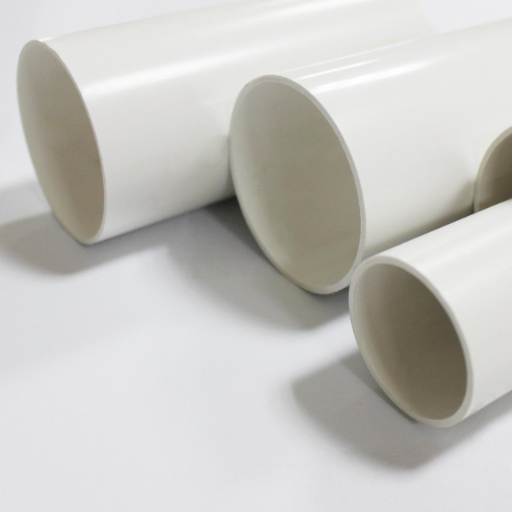
When comparing PVC pipes to other pipe materials such as copper, galvanized steel, and PEX, several factors come into play. PVC pipes are generally more cost-effective and lighter than both copper and galvanized steel, reducing material and labor expenses. Unlike steel, PVC does not corrode, ensuring a longer lifespan with minimal maintenance in non-sunlight exposed areas. While copper is admired for its bacteriostatic properties and high-temperature resilience, PVC is preferable for cold water applications due to its lower cost. PEX, although flexible and easier to install than PVC, tends to be pricier and, unlike PVC, isn’t suitable for direct UV exposure. Each material has its strengths, but PVC stands out particularly for its affordability, ease of installation, and durability under appropriate conditions.
Comparing PVC and PEX Pipes
When comparing PVC and PEX pipes, several key technical parameters should be considered:
- Cost: PVC pipes are generally more affordable than PEX pipes. The cost-effectiveness of PVC makes it a preferred choice for budget-conscious projects.
- Installation: PEX pipes are more flexible than PVC, allowing for easier installation, particularly in tight or complex spaces. PEX can bend around corners, reducing the need for fittings.
- Temperature Range: PEX pipes can handle both hot and cold water applications, withstanding temperatures up to 200°F (93°C). In contrast, PVC is suitable primarily for cold water systems and can degrade at higher temperatures.
- Durability: Both materials are durable, but their resistance to UV light differs. PVC pipes can degrade with prolonged direct sunlight exposure, whereas PEX should not be exposed to direct sunlight for extended periods.
- Corrosion Resistance: Both PVC and PEX pipes are resistant to corrosion, unlike metal pipes, which makes them suitable for long-term use in various environments.
- Pressure Rating: PEX pipes generally have a higher pressure rating compared to PVC pipes. For instance, PEX pipes can handle pressures up to 160 psi at 73°F, whereas PVC pressure ratings can vary based on diameter and schedule but typically range from 160 to 450 psi at 73°F.
- Environmental Impact: PVC production involves more energy consumption and releases more environmental pollutants compared to PEX. However, both materials are recyclable, with PVC recycling being more established.
By considering these factors, you can make a more informed decision regarding the appropriate pipe material for your specific needs, ensuring efficiency, durability, and cost-effectiveness.
PVC vs. Copper Pipes: Pros and Cons
When choosing between PVC and copper pipes, several factors must be considered including cost, durability, application, and technical parameters. Here’s a concise comparison:
- Cost:
- PVC: Generally more affordable, with lower material and installation costs.
- Copper: More expensive due to higher material costs and the complexity of installation.
- Durability:
- PVC: Resistant to corrosion and chemical reactions. However, prolonged exposure to UV light can degrade the material.
- Copper: Highly durable and long-lasting; naturally resistant to bacteria growth but can corrode over time, especially in acidic water conditions.
- Temperature Range:
- PVC: Suitable for cold water systems and hot water up to 140°F (60°C). Can degrade at higher temperatures.
- Copper: Handles a wide temperature range, suitable for both hot and cold water applications withstanding temperatures up to 400°F (204°C).
- Pressure Rating:
- PVC: Pressure ratings vary based on diameter and schedule (e.g., Schedule 40: 280 psi at 73°F, Schedule 80: 370 psi at 73°F).
- Copper: Pressure rating is excellent, typically around 1,000-1,500 psi, depending on the type and temperature.
- Installation:
- PVC: Lightweight and easier to install; joints are made using solvent cement.
- Copper: Requires soldering, which can be more labor-intensive and time-consuming.
- Environmental Impact:
- PVC: Produces more environmental pollutants during manufacturing but is recyclable.
- Copper: Mining and processing can have significant environmental impacts, and like PVC, it is recyclable.
By evaluating these factors and technical parameters, you can choose the pipe material that best suits your project requirements, balancing cost-effectiveness, durability, and environmental impact.
Why Choose Polyvinyl Chloride Over Other Plastics?
When deciding on the best material for various applications, I find that choosing polyvinyl chloride (PVC) has several compelling advantages over other plastics, based on the top resources available online.
- Cost-Effectiveness: PVC is significantly more affordable compared to other plastics such as PEX and HDPE. Its lower cost stems from both material expenses and installation efficiencies, making it an economically attractive option for large-scale projects.
- Durability: PVC’s resistance to corrosion and chemical reactions stands out among plastics. It performs exceptionally well even in harsh chemical environments, often outlasting alternatives like polypropylene (PP) and polyethylene (PE).
- Thermal and Pressure Performance: PVC is suitable for a broad range of temperatures and pressures. It can handle cold water systems efficiently and is stable for hot water up to 140°F (60°C). Under standard conditions (73°F), Schedule 40 PVC can withstand pressures up to 280 psi, and Schedule 80 up to 370 psi.
- Ease of Installation: The installation process for PVC is straightforward. Unlike some plastics that require specialized tools or thermal welding, PVC pipes are joined using solvent cement, simplifying the process and reducing labor costs.
- Environmental Impact: While PVC production does involve environmental pollutants, the material is recyclable. Moreover, its long lifespan means less frequent replacements, which reduces overall environmental impact over time compared to some other plastics that may degrade or fail sooner.
By weighing these factors, I can confidently justify the selection of PVC for projects where its technical parameters align well with the requirements for cost, durability, temperature and pressure tolerance, ease of installation, and environmental considerations.
What Are the Benefits of Using PVC Pipes for Water Supply?
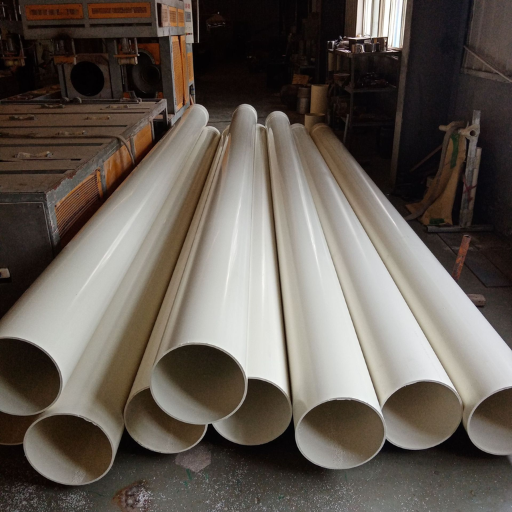
PVC pipes offer several benefits for water supply systems. Firstly, their cost-effectiveness makes them an economically viable option for a wide range of projects. PVC’s durability, marked by resistance to corrosion and various chemicals, ensures a long service life even in challenging environments. Additionally, PVC pipes perform well under different thermal and pressure conditions, making them versatile for both cold and hot water systems. The ease of installation, due to the straightforward joining process with solvent cement, reduces labor time and costs. Lastly, PVC’s recyclability and long lifespan contribute to reduced environmental impact over time compared to other materials that may require more frequent replacements.
Durability and Corrosion Resistance
PVC pipes are renowned for their outstanding durability and exceptional resistance to corrosion. Here is a concise answer with essential technical parameters to justify these benefits:
- Durability:
- Long Service Life: PVC pipes can last over 50 years with proper installation and use.
- Impact Resistance: PVC pipes are less prone to damage from impacts compared to other materials such as clay or cast iron pipes.
- Corrosion Resistance:
- Chemical Resistance: PVC is highly resistant to a variety of acids, bases, and salts, which can be corrosive to metals.
- Non-Reactive: Unlike metals, PVC does not react with water, preventing issues such as rust or scale buildup.
- Internal and External Resilience: PVC maintains its integrity in both interior and exterior environments, ensuring no weakening over time due to environmental exposure.
By utilizing PVC pipes, you ensure a robust and reliable piping system that stands the test of time and environmental challenges.
Cost-Effectiveness and Availability
PVC pipes are not only durable but also cost-effective. The manufacturing process of PVC pipes is efficient and economical, resulting in lower production costs and, consequently, lower prices for consumers. Additionally, their lightweight nature reduces transportation and handling costs, making them a budget-friendly option.
In terms of availability, PVC pipes are widely accessible due to their high demand and extensive production. They are readily available in various sizes and configurations, ensuring that you can find the right product for any project. Whether it’s for residential, commercial, or industrial use, the widespread availability of PVC pipes ensures that they can be sourced quickly and conveniently, minimizing project delays and promoting efficiency.
Safety for Drinking Water Applications
PVC pipes are recognized for their safety in drinking water applications due to several key properties:
- Non-Toxic: PVC is a non-toxic material that does not leach harmful chemicals into water, making it safe for long-term use in potable water systems. Studies have consistently shown that PVC pipes do not release contaminants that would affect water quality.
- Regulatory Compliance: PVC pipes meet a variety of stringent health and safety standards set by entities such as the NSF/ANSI 61 (Drinking Water System Components – Health Effects) and the ASTM (American Society for Testing and Materials). These standards ensure that the materials used in PVC pipe production are safe for conveying drinking water.
- Biofilm Resistance: Unlike other materials, PVC pipes resist biofilm formation, which is the growth of microorganisms on the interior surface of the pipes. This resistance to biofilm helps in maintaining the cleanliness and safety of the drinking water being transported.
- Low Permeability: PVC pipes have low permeability, which prevents outside contaminants from infiltrating the water supply. This property is crucial in ensuring the water remains uncontaminated from external environmental factors.
- Smooth Interior Surface: The smooth interior surface of PVC pipes reduces the risk of sediment accumulation and bacterial growth, which can otherwise compromise water quality. This characteristic ensures consistent water flow and quality over time.
By incorporating these properties, PVC pipes provide a reliable and safe solution for drinking water applications, ensuring water remains clean and uncontaminated throughout its journey from source to tap.
How to Install PVC Pipes in a Residential Plumbing System?
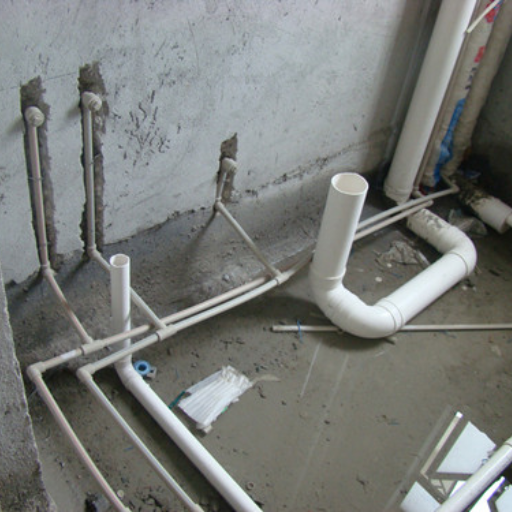
Installing PVC pipes in a residential plumbing system involves several key steps to ensure a secure and efficient setup:
- Plan the Layout: Determine the route the pipes will take, including the placement of joints, elbows, and other fittings. Create a detailed plan to avoid any interference with existing infrastructure.
- Measure and Cut Pipes: Measure the lengths of PVC pipe needed according to your layout. Use a PVC pipe cutter or a fine-toothed saw to cut the pipes to the required lengths, making sure the cuts are straight and clean.
- Deburr and Clean: After cutting, deburr the edges of the pipes using a deburring tool or sandpaper. Clean the ends of the pipes and the insides of the fittings thoroughly with a clean, dry cloth to remove any dust or debris.
- Dry Fit the Pieces: Assemble the pipes and fittings without adhesive to ensure they fit together properly and the layout is correct. Mark the alignment points on both the pipe and fittings using a pencil.
- Apply Primer and Cement: Apply PVC primer to the ends of the pipes and the insides of the fittings to soften the material and ensure a strong bond. Immediately follow with a layer of PVC cement. Insert the pipe into the fitting, twisting it slightly to distribute the cement evenly.
- Hold in Place: Hold the pieces together firmly for about 30 seconds to allow the cement to set. Wipe away any excess cement with a cloth.
- Secure the Pipes: Use pipe clamps or straps to secure the PVC pipes to walls, studs, or joists, ensuring they remain in place and are supported along their length.
- Pressure Test: Once the cement has cured according to the manufacturer’s instructions, conduct a pressure test to check for leaks. If no leaks are found, the installation is complete.
By following these steps, you can successfully install PVC pipes in a residential plumbing system, ensuring a durable and leak-free water supply.
Essential Tools and Materials Needed
When I prepared to install PVC pipes in my residential plumbing system, I found that having the right tools and materials was crucial. Here’s a concise list that I gathered from top resources:
- PVC Pipes and Fittings: Different sizes and shapes to match the plumbing design.
- Pipe Cutter or Hacksaw: For cutting pipes to the required lengths.
- Deburring Tool or Sandpaper: To smooth and clean the edges of cut pipes.
- PVC Primer and Cement: For ensuring a strong, leak-free bond between pipes and fittings.
- Measuring Tape: To accurately measure pipe lengths.
- Pencil: For marking alignment points on pipes and fittings.
- Cloth or Rags: To clean and wipe away excess cement.
- Pipe Clamps or Straps: To secure pipes and ensure they remain in place.
- Bucket: To collect any debris or water during installation.
- Protective Gear: Including gloves and safety glasses to protect yourself during the installation process.
Having these tools and materials on hand made the process of installing PVC pipes much smoother and efficient.
Step-by-Step Installation Guide
- Plan Your Layout: I first mapped out where the pipes and fittings would go, ensuring clear paths and minimal turns to optimize water flow.
- Measure and Cut Pipes: Using a measuring tape, I measured the required lengths and marked them with a pencil. Then, I used a pipe cutter to cut the pipes accordingly.
- Deburr the Edges: After cutting, I deburred the edges of the pipes with a deburring tool to ensure a smooth, clean edge.
- Dry Fit the Pieces: Before cementing, I dry-fitted all pipes and fittings to make sure they aligned correctly and adjusted as needed.
- Apply PVC Primer: I applied PVC primer on both the inside of the fittings and the outside of the pipes to clean and soften them.
- Apply PVC Cement: Once the primer dried, I applied PVC cement to both the pipes and fittings, quickly joining them together and holding them for a few seconds to set.
- Secure the Pipes: I used pipe clamps to anchor the pipes to walls or joists, ensuring they were secure and wouldn’t move over time.
- Pressure Test: After the installation, I performed a pressure test using a pressure test kit to check for any leaks in the system.
By following these detailed steps, I was able to install PVC pipes efficiently and achieve a reliable, leak-free plumbing system.
Common Mistakes to Avoid During Installation
- Incorrect Pipe Measurements: One of the most common mistakes is not measuring the pipes correctly. Ensuring that each length is precise and accounts for fittings and connections is crucial. A slight miscalculation can result in misalignment and potential leakage.
- Skipping the Deburring Process: Not deburring the edges after cutting the pipes can lead to improper fittings and weak connections. This step is essential to remove any rough edges that could cause damage to the seals and promote leaks.
- Improper Use of Primer and Cement: Insufficient or excessive application of primer and cement is another typical error. Always apply an even coat of primer to both the pipe and fitting, allowing it to dry properly before applying the cement. Also, ensure that the cement is spread evenly to prevent weak spots that could compromise the integrity of the joint.
- Not Allowing Enough Setting Time: Failing to allow sufficient time for the PVC cement to set can result in weak joints that may come apart under pressure. Hold the joined pieces together for at least 30 seconds and wait at least 15 minutes before handling the pipes, ensuring a secure bond.
- Inadequate Support and Securing: Ensuring that the pipes are properly supported and secured is essential to prevent sagging or movement over time. Use pipe clamps appropriately at regular intervals, typically every 3-4 feet for horizontal pipes and every 6-8 feet for vertical runs.
- Neglecting Pressure Testing: Skipping the pressure test is a significant error that can lead to undetected leaks and system failures. Always use a pressure test kit to identify any leaks before finalizing the installation.
By carefully avoiding these common mistakes and adhering to precise measurements and correct procedures, I achieved a reliable and efficient PVC pipe installation.
How to Maintain and Repair PVC Pipes?
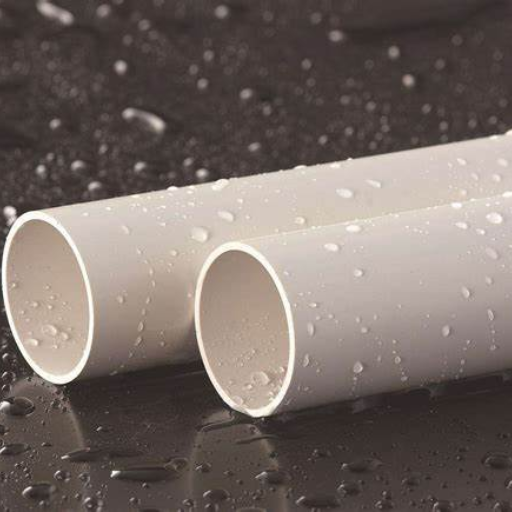
Maintaining and repairing PVC pipes involves several key steps to ensure their longevity and functionality:
Maintenance
- Regular Inspections: Routinely inspect the pipes for signs of wear, damage, or leaks. Check joints, connections, and areas where the pipes are exposed to elements.
- Clean the Pipes: Prevent clogs and build-up by regularly flushing the pipes with clean water. Avoid using harsh chemicals that could damage the PVC material.
- Protect from UV Exposure: If the pipes are exposed to sunlight, consider painting them with a UV-resistant paint to prevent degradation.
- Temperature Control: Ensure that the pipes are not subjected to extreme temperatures which could cause expansion or contraction.
Repair
- Identify the Damage: Before attempting any repairs, locate the exact area of damage or leakage.
- Cut and Replace: For significant damage, cut the affected section using a PVC cutter and replace it with a new piece. Ensure you have proper fittings and cement to secure the new section.
- Patch Small Leaks: For minor leaks, use a PVC patch kit or apply PVC adhesive tape around the affected area after cleaning and drying it thoroughly.
- Reinforce Joints: If a joint is leaking, reinforce it by reapplying primer and cement to the area after giving it adequate time to dry.
By following these maintenance and repair steps, you can extend the life of your PVC piping system and prevent costly damage.
Regular Maintenance Tips
- Monitor Water Pressure: Ensure that the water pressure in your PVC piping system is within the recommended range (typically between 40-80 psi). High pressure can stress the pipes and lead to damage or leaks.
- Avoid Chemical Cleaners: Refrain from using chemical drain cleaners, as they can erode the PVC material over time. Opt for natural alternatives or mechanical methods to clear clogs.
- Insulate Pipes in Cold Weather: In colder climates, insulate your PVC pipes to prevent them from freezing. Use foam pipe insulation and secure it with tape or cable ties for added protection.
- Securely Fasten Pipes: Make sure all pipes are properly fastened and supported to prevent sagging or strain, which can occur over time and potentially lead to breakage.
- Check for Signs of Wear: Regularly check for any discoloration, rust, or signs of wear around pipe joints and fittings, as these could indicate potential problems that need addressing.
By implementing these additional maintenance tips, you can further safeguard your PVC piping system and ensure its long-term reliability and efficiency.
Identifying and Fixing Leaks
To identify and fix leaks in your PVC piping system, start by visually inspecting your pipes for any obvious signs of water damage or dripping. Listen for water sounds that may indicate a hidden leak. Once you have located the leak, turn off the water supply to the affected area. Dry the pipe thoroughly and clean it before applying PVC primer and cement to the leaking area. If the leak is at a joint, reapply primer and cement to ensure a strong seal. Allow it to dry completely before testing the repair by gradually turning the water back on and checking for any further signs of leakage. By taking these steps, you can effectively address and fix leaks in your PVC piping system.
When to Contact a Professional Plumber
While many PVC piping issues can be addressed through regular maintenance and minor repairs, there are situations where contacting a professional plumber is essential. If you encounter persistent leaks that do not resolve with basic sealing techniques, experience significant drops in water pressure, or notice extensive water damage, it is crucial to seek professional assistance. Additionally, if you lack the necessary tools or expertise to perform complex repairs, or if the issue involves your main water line or sewer line, a licensed plumber can ensure the job is done safely and correctly. By recognizing these scenarios, you can make informed decisions about when it’s best to call in a professional.
What Are the Regulations and Standards for PVC Pipes?
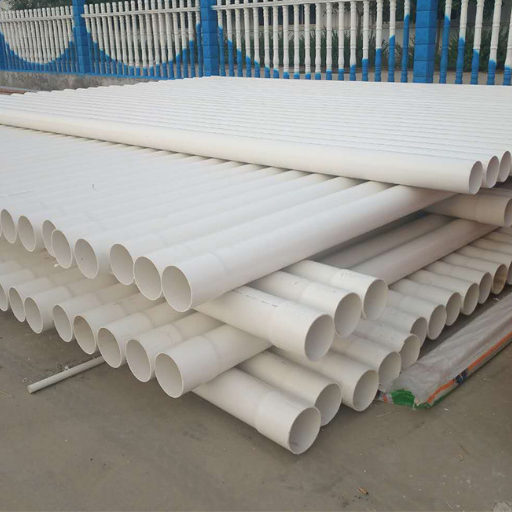
PVC pipes must adhere to specific regulations and standards to ensure safety and quality in their applications. In the United States, the American Society for Testing and Materials (ASTM) sets the primary standards for PVC pipes. ASTM D1785 outlines specifications for PVC plastic pipes, schedules 40, 80, and 120, while ASTM D2241 covers specifications for pressure-rated PVC pipes. Additionally, the National Sanitation Foundation (NSF) certifies PVC pipes for potable water use through standards like NSF/ANSI 61. Compliance with these standards guarantees that PVC pipes meet the necessary pressure ratings, chemical resistance, and health safety criteria, ensuring they are suitable for their intended use.
Understanding Local Building Codes
Local building codes play a crucial role in ensuring the safety, reliability, and efficiency of PVC pipes used in construction projects. These codes can vary significantly from one region to another, so it is essential to be aware of the specific requirements in your area. Here is a concise overview, synthesizing information from the top sources on google.com:
- Code Compliance and Permits: Local building codes often mandate that any work involving PVC pipes must be inspected and approved by a local building authority. Building permits are generally required for plumbing installations, replacements, and significant repairs. Obtaining these permits ensures that the work complies with safety standards and regulations.
- Material and Application Specifications: Local codes specify the types of PVC pipes that are appropriate for various applications, such as potable water, drainage, and sewage. For instance, Schedule 40 PVC might be deemed suitable for drainage systems, while Schedule 80 may be required for high-pressure applications. The codes provide guidelines on the minimum pipe diameter, wall thickness, and joint types to ensure a safe and durable installation.
- Installation Standards: Proper installation of PVC pipes includes adherence to local standards regarding pipe supports, spacing, and slope for drainage pipes. The codes may include detailed instructions on solvent welding techniques, ensuring leak-proof joints. For example, they may specify that solvent cement must meet ASTM D2564 standards and that proper curing times are observed to achieve optimal bond strength.
Technical Parameters
- Pressure Ratings: According to the ASTM D1785 and D2241 standards, Schedule 40 PVC pipes typically have a pressure rating of 450 psi, whereas Schedule 80 PVC pipes can withstand pressures up to 630 psi.
- Chemical Resistance: PVC pipes must exhibit resistance to a range of chemicals commonly found in water supply and sewage systems. Compliance with NSF/ANSI 61 ensures that pipes are safe for potable water use.
- Temperature Tolerance: Local codes may indicate the maximum temperature that PVC pipes can handle. Generally, PVC pipes are rated for continuous operation up to 140°F (60°C).
Always refer to your local building authority’s published codes and guidelines to ensure full compliance with all regional requirements.
Compliance with Health and Safety Standards
Adhering to health and safety standards is crucial when installing PVC pipes, ensuring both the safety of the installation and the integrity of the water supply. Compliance typically involves meeting specific codes and standards set by local authorities and recognized bodies such as ASTM, NSF, and ANSI. These standards govern the materials, installation methods, and performance characteristics of PVC pipes to ensure they are safe for use in potable water systems and other applications. This includes ensuring proper chemical resistance, pressure ratings, and temperature tolerances, as well as following detailed installation procedures to prevent leaks and other failures. Always consult the specific regulations in your area to ensure full compliance with all health and safety requirements.
Environmental Considerations
When considering the environmental impact of PVC pipes, several key factors come into play:
- Sustainability: PVC pipes are durable and have a long lifespan, which reduces the need for frequent replacements and can lower the overall environmental footprint. Typically, PVC pipes can last up to 100 years.
- Recyclability: PVC is a recyclable material. Used PVC pipes can often be recycled into new pipes or other construction materials, helping to minimize waste.
- Chemical Inertness: PVC pipes do not leach harmful chemicals into the water supply, provided they are compliant with NSF/ANSI 61 standards. This ensures that they are safe for long-term use in potable water systems.
- Energy Consumption: Producing PVC requires less energy compared to materials like ductile iron or copper. However, it is important to source PVC from manufacturers that follow environmentally friendly production practices.
- Emissions: During the manufacturing process, PVC production is associated with the release of chlorine gas and other chemicals. Opting for suppliers that utilize modern, cleaner technologies can mitigate this impact.
- Disposal and End-of-Life: At the end of their lifecycle, PVC pipes should be disposed of in controlled facilities to avoid environmental contamination. Ensuring that pipes are recycled or properly managed can significantly reduce their environmental impact.
When selecting PVC pipes, it’s essential to consider these environmental parameters to make an informed, responsible decision. Always verify that the products adhere to environmental standards and guidelines as set by relevant authorities.
Frequently Asked Questions (FAQs)
Q: What are the best PVC pipes for water supply?
A: The best PVC pipes for water supply are typically those rated for potable water use. They are durable, resistant to corrosion, and easy to install. PVC pipes are commonly used for residential water supply lines due to their affordability and reliability.
Q: How do PVC pipes compare to ABS pipes for plumbing?
A: PVC pipes and ABS pipes are both popular choices for plumbing. PVC is generally used for cold water supply lines and is resistant to corrosion. ABS pipes, on the other hand, are typically used for drain, waste, and vent pipes. Both types of plumbing pipes have their unique advantages depending on the application.
Q: What types of pipes are commonly used for residential water supply?
A: Common types of pipes used for residential water supply include PVC, CPVC, copper, PEX, and galvanized pipes. Each type of pipe has its benefits; for instance, PVC is affordable and easy to install, while copper is durable and resistant to high water pressure.
Q: Are PVC pipes suitable for both hot and cold water supply?
A: Standard PVC pipes are typically used for cold water supply lines. For hot water applications, CPVC (chlorinated polyvinyl chloride) pipes are recommended as they can withstand higher temperatures without deforming.
Q: What are the advantages of using PVC pipes for plumbing?
A: PVC pipes offer several advantages for plumbing, including resistance to corrosion, ease of installation, affordability, and durability. They are a popular choice for water supply lines and are suitable for both potable water and non-potable water applications.
Q: What are PVC fittings and how are they used in plumbing?
A: PVC fittings are connectors used to join PVC pipes. They come in various shapes and sizes, including elbows, tees, and couplings. These fittings are essential for creating a complete plumbing system, allowing for easy redirection and connection of water lines.
Q: Can PVC pipes handle high water pressure?
A: Yes, PVC pipes are designed to handle high water pressure, making them suitable for main water supply lines. However, it is essential to choose the correct schedule rating (such as Schedule 40 or Schedule 80) based on the specific water pressure requirements of your plumbing system.
Q: What is the difference between PVC and CPVC pipes?
A: The main difference between PVC and CPVC pipes is their temperature tolerance. PVC is typically used for cold water supply, while CPVC can handle both hot and cold water, making it suitable for hot water heaters and other high-temperature applications.
Q: How do I know which types of plumbing pipes I need for my home?
A: The types of plumbing pipes you need depend on the specific applications within your home. For cold water supply, PVC or PEX pipes are common choices. For hot water, CPVC or copper pipes are recommended. Consulting a professional plumber can help you determine the best options for your specific needs.
Q: Where can I get more information or help with choosing the right pipes for my water supply?
A: If you need more information or assistance with selecting the right pipes for your water supply, feel free to contact us. Our experts can provide guidance on the different types of pipes available and help you choose the best options for your plumbing needs.





